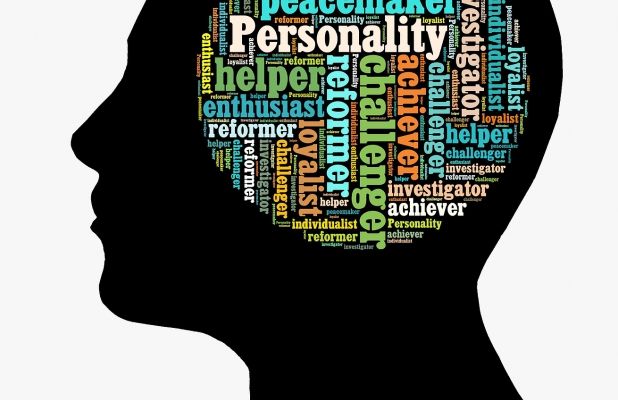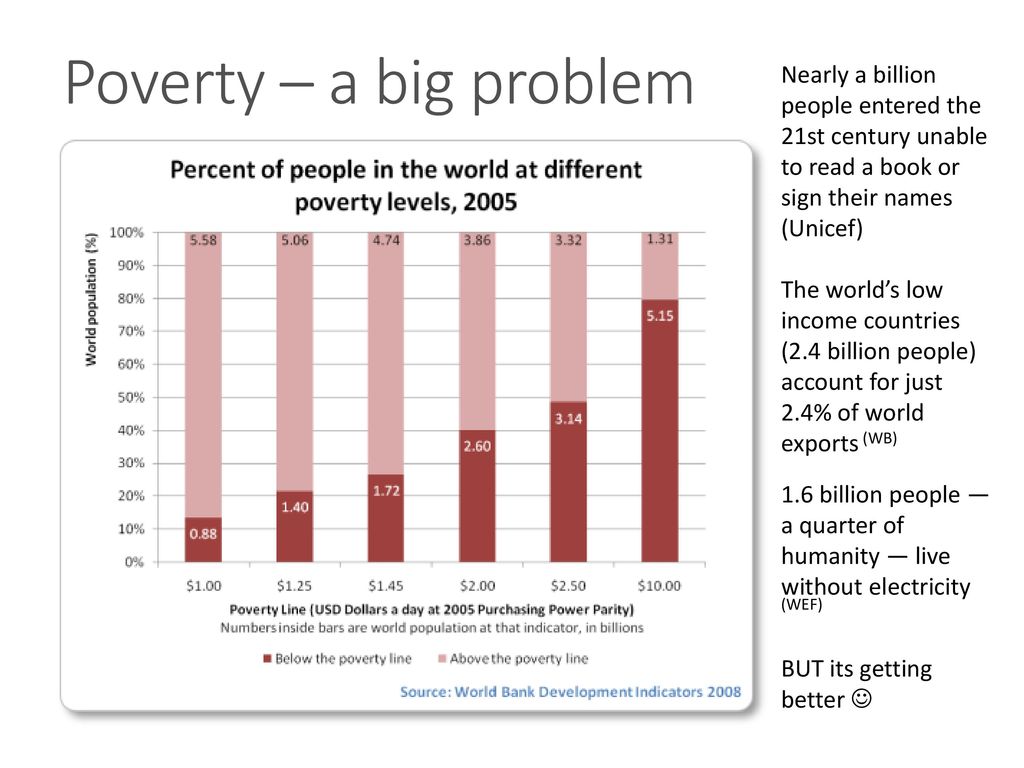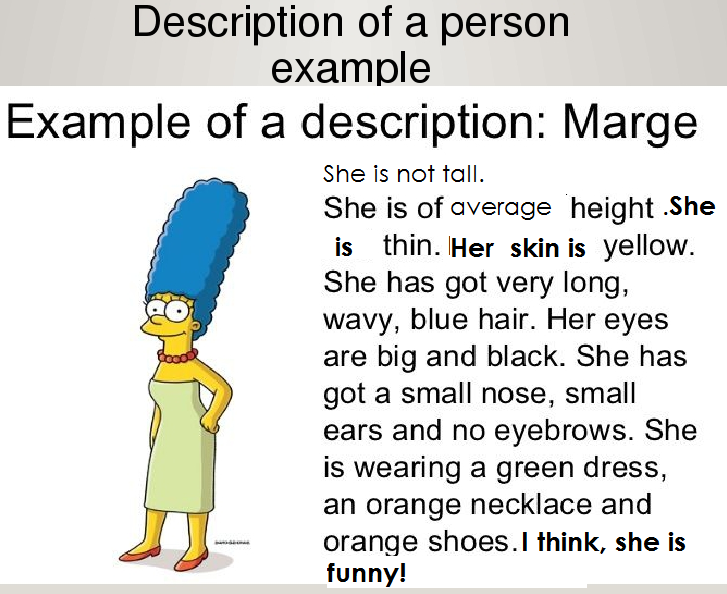Mental age regression
What It Is, Why It Happens & When It May Be Helpful
Age regression occurs when someone reverts to a younger state of mind. This retreat may be only a few years younger than the person’s physical age. It could also be much younger, into early childhood or even infancy.
People who practice age regression may begin showing juvenile behaviors like thumb-sucking or whining. Others may refuse to engage in adult conversations and handle issues they’re facing.
Age regression is sometimes used in psychology and hypnotherapy. It can also be used as a self-help tool, or something someone does to reduce stress.
Keep reading to find out when age regression might be used and what it might achieve.
Sigmund Freud believed age regression was an unconscious defense mechanism. It was a way the ego could protect itself from trauma, stress, or anger.
Still, other psychologists think of age regression as a way for people to achieve a therapeutic goal. It might be used to help a patient recall memories of trauma or painful events. The therapist can then help their patient heal properly from those experiences.
Psychiatrist Carl Jung believed age regression wasn’t a means to escape anything. He believed age regression could be a positive experience. It could be used to help people feel younger, less stressed, and more open.
With all these different theories for age regression, several types exist.
Each of these age regression types share two common elements:
- People who regress revert to a younger state of mind than their physical age. The length of years varies from type to type and person to person.
- Age regression is in no way sexual.
As a symptom
Age regression may be the result of a medical or psychiatric issue. For example, some individuals experiencing significant distress or pain may revert to childlike behavior as a means to cope with anxiety or fear.
Certain mental health issues make age regression more likely. Age regression could be a symptom of one of these conditions:
- schizophrenia
- dissociative identity disorder
- schizoaffective disorder
- post-traumatic stress disorder (PTSD)
- major depressive disorder
- dementia
- borderline personality disorder
Age regression may occur in personality disorders when people come face to face with distressing memories or triggers. In this case, the age regression may be spontaneous.
In this case, the age regression may be spontaneous.
What’s more, some individuals may begin to revert to a younger age as they grow older. This can be a sign of dementia. It might also be a coping mechanism for worries about the impact of aging.
Clinical
Age regression can be used as a therapeutic technique. Some mental health professionals use hypnotherapy and age regression to help patients return to painful periods in their lives. Once there, they can help them overcome the trauma and find healing.
However, this practice is controversial. Some experts suggest it could be possible to “uncover” false memories. Plus, it’s unclear how reliable these “recovered” memories are.
Trauma recovery
People with a history of trauma may be more likely to regress. In fact, age regression may be common in people who have been diagnosed with dissociative identity disorder (DID), a disorder formerly known as multiple personality disorder.
People with this disorder frequently have a younger personality among their distinctive personalities.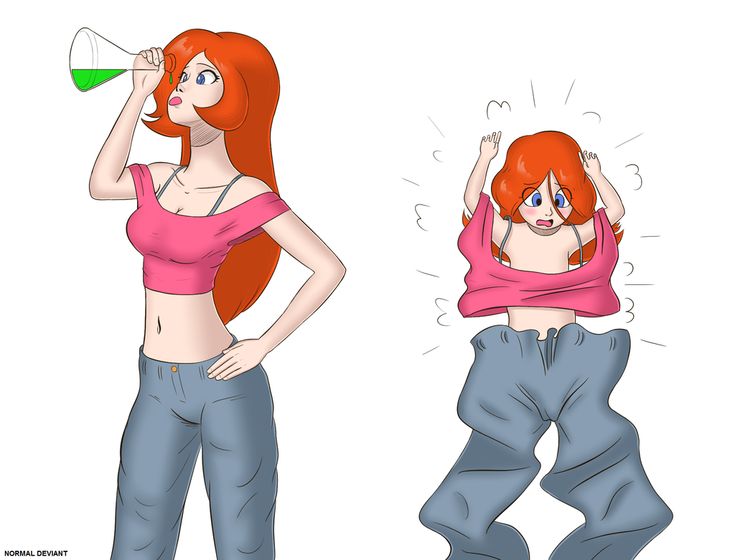 However, it’s believed that the “little” may not be a separate personality. Instead, it may be a regressed version of the original personality.
However, it’s believed that the “little” may not be a separate personality. Instead, it may be a regressed version of the original personality.
In other words, the person with DID may be aware of everything, but they feel like they’re a different age. They may talk like a child or begin behaving like one. In other instances, the “little” is entirely separate.
In this case, age regression is a form of security against fear or insecurity. This type of age regression may be triggered by particular events or stressors.
Self-help
For others, age regression may be intentional. Some individuals may select reverting to a younger state as a means to block out stress and worry. They can also revert to a younger age so they can avoid tough issues or personal problems.
As a form of self-help, age regression may help you revert to a time in your life when you felt loved, cared for, and secure. In that sense, this can be a positive experience.
However, age regression may be a sign of a larger mental health issue. You should speak with a mental health care provider about this practice. They can help you learn how to use it safely. They can also evaluate your experiences to determine if a different type of treatment is needed.
Age regression is never considered sexual. It’s a type of defense mechanism that allows you to mentally escape to a different time in your life.
This is different from pretending to be younger. Indeed, some individuals portray themselves many years younger than they are as part of a hobby, sexual fetish, or kink.
For example, some members of fandom communities may use costumes and portrayals to “pretend” to be younger and more naïve. This is not real age regression.
There’s no inherent risk in age regression. If you practice it as a form of self-help or relaxation, you may want to make sure you’re in a safe place and around people who understand this technique.
If, however, you find yourself reverting to a younger age without your control, you should seek help from a mental health professional.
You may be showing symptoms of an underlying issue that needs to be addressed differently.
Age regression occurs when you mentally retreat to an earlier age. In all ways, you believe you’re back at that point in your life, and you may exhibit childish behaviors, too.
Some people choose to revert to a younger age. In this case, it can be a coping mechanism to help them relax and eliminate stress. Age regression may be a symptom of a mental health condition, such as dissociative identity disorder or PTSD.
Age regression can also be used a therapeutic technique, though it’s a controversial practice. A mental health professional can help you return to a time in your life when you were abused or experienced trauma. From there, you can work together to heal.
Speak to your healthcare provider if you notice symptoms of age regression or you’re interested in learning more.
Causes, Signs, & Overcoming It
Age regression can be an involuntary or voluntary reaction to stress and trauma. Here’s what to know about it.
Here’s what to know about it.
Think back to when you were a child: what were some of the things you used to do to self-soothe when you were scared or anxious?
Did you suck your thumb or hide under the bed? Maybe you covered your ears and closed your eyes? Or started to whine until someone paid attention to you in the way you wanted?
As a child, these behaviors are expected. However, we tend to grow out of them as we age, enter adulthood, and learn more effective and age-appropriate ways to relieve stress.
But sometimes, people revert to a younger state of mind and re-adopt some of these juvenile behaviors. This is called age regression.
“Age regression is a term that is used to describe an individual’s reversion of their mental state to a younger one,” explains Bryan Bruno, psychiatrist and medical director of Mid City TMS in New York City. “Age regression may only set the individual’s mind back a few years, but in some cases, it may take the individual’s mind back to childhood or even infancy.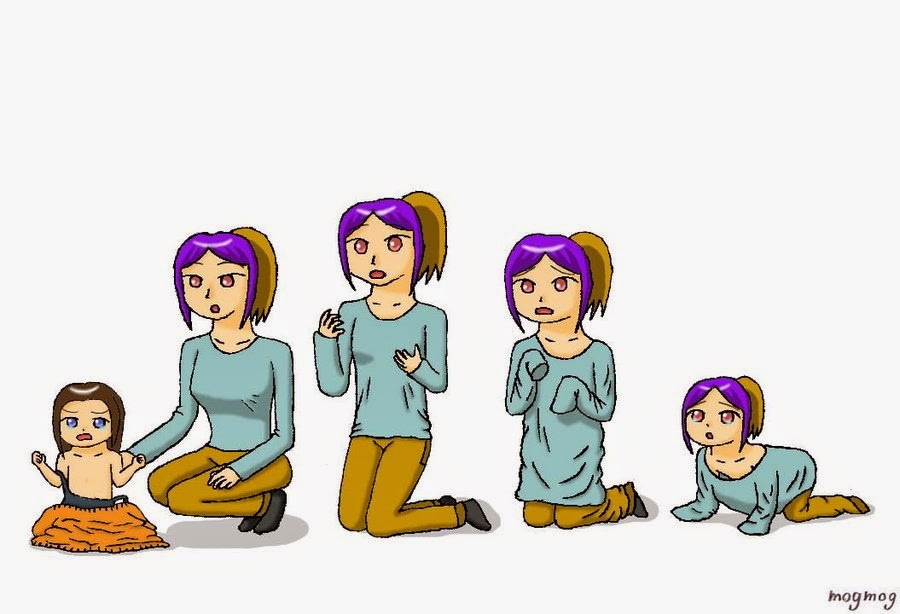 ”
”
This reversion can happen at any age — though, in children, it is relatively common and usually temporary.
“Generally, [age regression] is a defense mechanism,” explains psychologist Cynthia Halow. “People regress as a form of escape: they want to get away from the realities of their current life [and] they tend to revert to a point in their life when they felt safe, comfortable, and secure.”
It can also be an intentional coping mechanism, she adds.
Generally, there are two broad types of age regression: involuntary and voluntary.
Involuntary age regression
Involuntary age regression is when you are unconsciously reverting to a younger state of mind; you did not choose to engage in this behavior.
Voluntary
Some people intentionally regress to a younger state of mind as a way to block out anxiety, difficult feelings, or personal problems as a self-help or self-soothing strategy.
That said, if you do this regularly, you might want to speak to a therapist to make sure it’s not a sign of a larger mental health issue and to learn to do it safely.
Age regression can also be used as a therapeutic technique in conjunction with hypnotherapy.
“[This] therapy allows patients to relive earlier memories and experiences,” explains Bruno. “It is often done to help patients resolve issues in their past and confront memories that may be harming their present mental health.”
However, some therapists believe that this practice could lead to the creation of false memories — so as a therapy technique, it’s somewhat controversial.
Symptoms of involuntary age regression can include:
- crying
- being mute
- using baby talk
- rocking
- pacing
- whining
- curling up in the fetal position
- hugging a comfort object like a stuffed animal or blanket
- having a temper tantrum
Symptoms of voluntary age regression could include:
- sucking on your thumb or a pacifier
- playing with kid’s toys
- using children’s utensils or sippy cups
- creating a space filled with childlike objects
- wearing kid’s clothes
Both involuntary and voluntary age regression can be triggered by stress, fear, insecurity, or trauma.
Unconscious age regression can also be a symptom of certain illnesses, neurological conditions, or mental health conditions, including:
- post-traumatic Stress Disorder (PTSD)
- schizophrenia
- dementia
- borderline personality disorder
- dissociative identity disorder
- delirium
- mood disorders
- major depressive disorder
- personality disorders
Treatment for involuntary age regression often depends on how old you are and what is causing the age regression.
For example, explains Bruno, “In children, the behavior is typical, and most often a temporary reaction to stress or trauma.” It generally goes away on its own, especially if you provide them with care, love, and attention.
But for adults, he says, “the most effective method in treating age regression is to identify its root cause.”
In other words, treatment often involves determining if it is a symptom of a larger mental health condition, then treating that condition.
One of the most effective ways to treat age regression is to speak with a therapist. Regardless of the root of your emotional regression, a therapist will work with you to understand your defense mechanisms and emotional triggers, and help you find healthier ways to cope.
Age regression is a reaction to stress, anxiety, or trauma. It can be voluntary, a way to self-soothe when you’re feeling overwhelmed, or involuntary, a potential symptom of a larger mental health issue.
If you’re experiencing age regression, the first step to consider is reaching out to a therapist — they can help you figure out why it’s happening and the best next steps to take.
What is regressive hypnosis?
Regressive hypnosis is a state in which the hypnotherapist introduces the patient in order to bring him back to the events and experiences of the past. You can return to the past without resorting to hypnosis, but using psychotherapy. But in regressive hypnosis, this is easier to do, especially if you need to recall the forgotten past and distant, dim memories.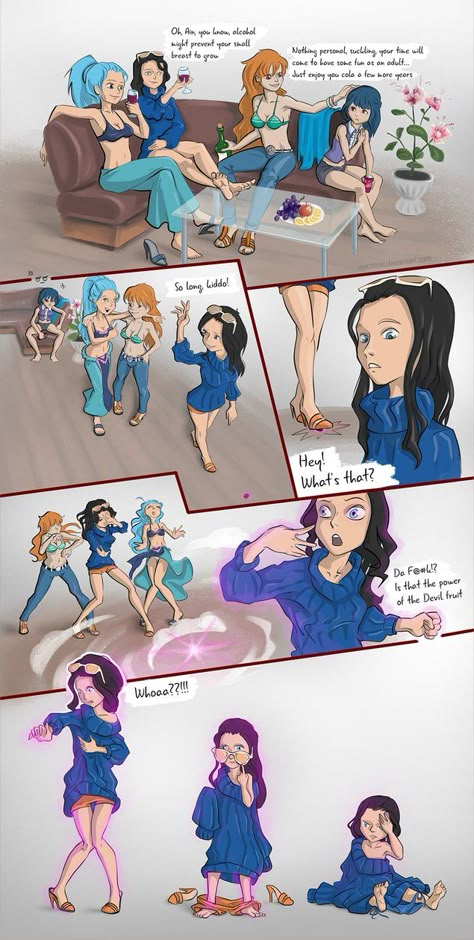 Hypnosis is a state of extreme focus on one's own inner world and complete disconnection from external stimuli. This is not a dream, as Pavlov wrote, and not a flight of the soul to the stars. This is precisely the disconnection from external stimuli and sources. And when a person focuses on himself, he becomes the best doctor for himself.
Hypnosis is a state of extreme focus on one's own inner world and complete disconnection from external stimuli. This is not a dream, as Pavlov wrote, and not a flight of the soul to the stars. This is precisely the disconnection from external stimuli and sources. And when a person focuses on himself, he becomes the best doctor for himself.
Types of regressive hypnosis
There are three time periods that hypnotherapists return to with regressive hypnosis. The first age period is from 3-4 years to the present moment. All hypnotherapists in the Western world work in this direction, and this is the most common direction in regressive hypnosis. Conscious memories in a person begin at about the age of 3-4 years. Up to this point, those parts of the brain that are responsible for memories have not yet been formed. Therefore, before the age of 3-4 years, a person rarely has memories. This does not mean that we do not remember anything at all. It is possible that we remember, but at the moment there is no scientific data confirming this fact.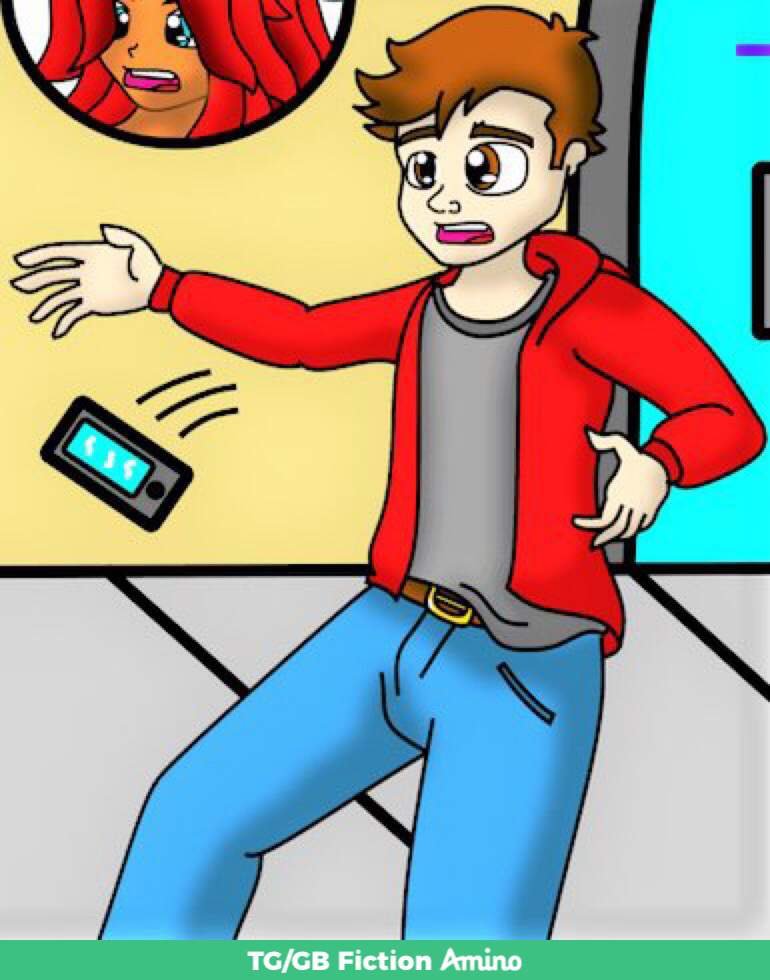 According to the research of world-renowned memory specialist Elizabeth Loftus, it is impossible to say for sure whether these are restored, implanted or real memories. A person who grows up in a family is told about his childhood by his parents and grandparents, and subsequently he can pass off implanted memories of up to three years as real ones.
According to the research of world-renowned memory specialist Elizabeth Loftus, it is impossible to say for sure whether these are restored, implanted or real memories. A person who grows up in a family is told about his childhood by his parents and grandparents, and subsequently he can pass off implanted memories of up to three years as real ones.
There is a theoretical assumption that if a person is returned to the age at which a problem or some kind of traumatic situation occurred, and made to relive this period of time again, in the right way, under the guidance of a hypnotherapist, then this problem can be resolved.
The second age period to which hypnotherapists return is from prenatal development to the present moment. It was studied by the Czech-American specialist Stanislav Grof. It is hard to imagine that a fetus in the womb can remember anything, but according to confirmed research, certain hypnotherapists, such as the Soviet hypnologist Vladimir Raikov, are able to return a person to those reflexes that are unique to a newly born baby.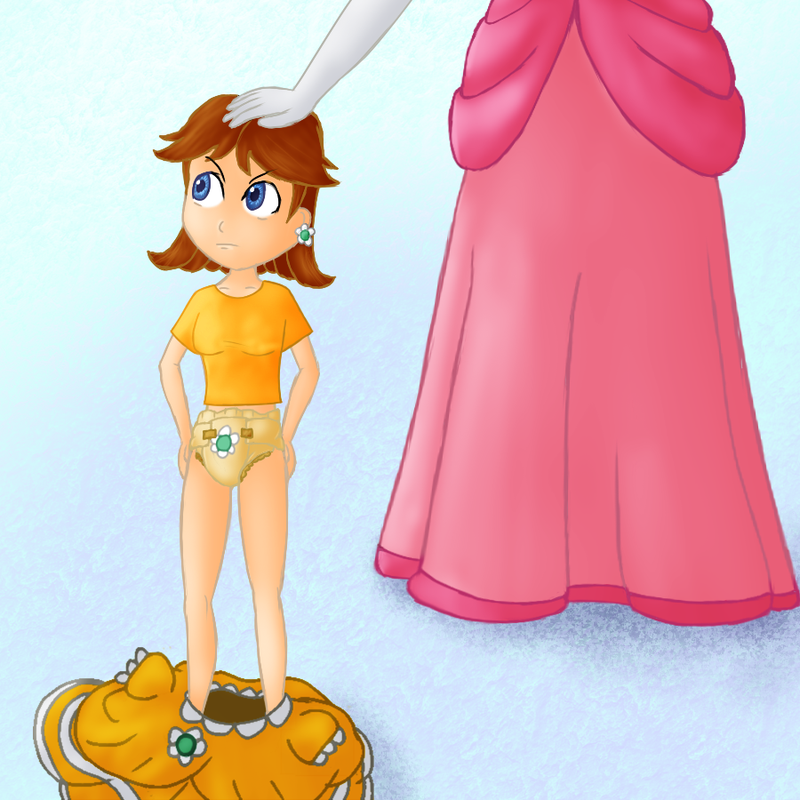 Typically, regressive hypnosis of this kind is used for scientific research and demonstrations.
Typically, regressive hypnosis of this kind is used for scientific research and demonstrations.
Hypnotherapists of the third type claim to be able to bring patients back to their past lives during treatment. There are few such hypnotherapists, they have nothing to do with official science and conventional medicine, and their work is not published in official scientific journals.
Tasks and effectiveness of regressive hypnosis
See also
Myths about hypnosis
There is a theoretical assumption that if a person is returned to the age at which a problem or some kind of traumatic situation occurred, and made to experience this period of time again, in the right way, under the guidance of a hypnotherapist, then this problem can be resolved. Such problems can be solved without resorting to regressive hypnosis, simply by introducing a person into a trance state and carrying out certain therapeutic manipulations. Moreover, they can be solved without hypnosis at all, by conducting psychotherapy sessions. It is not known what will work faster and more efficiently. However, it is much better for a specialist to have the opportunity to use several tools and techniques during the treatment of a patient.
Moreover, they can be solved without hypnosis at all, by conducting psychotherapy sessions. It is not known what will work faster and more efficiently. However, it is much better for a specialist to have the opportunity to use several tools and techniques during the treatment of a patient.
What can be found out during regressive hypnosis, the patient in the process of psychotherapy analyzes with a specialist and discusses how otherwise it was necessary to survive the traumatic situation.
Regressive hypnosis is most effective in the treatment of trauma from the past or childhood - not classic PTSD, which developed, for example, as a result of participation in hostilities, a terrorist attack, or as a result of an accident, but, for example, as a result of rape or prolonged bullying that occurred in the distant past . In some cases, a person develops dissociative identity disorder, which was formerly called multiple personality disorder or split personality disorder, and even earlier, hysteria.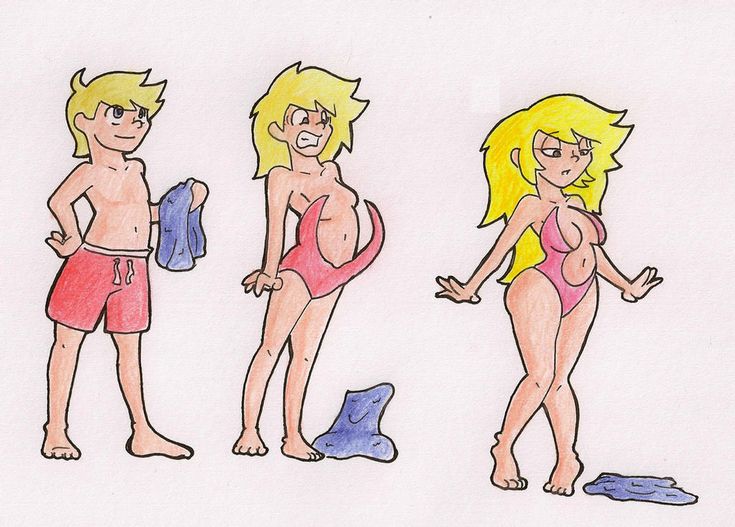 To date, the most effective treatment for dissociation is hypnosis, in particular regressive hypnosis, and this has been confirmed by many studies.
To date, the most effective treatment for dissociation is hypnosis, in particular regressive hypnosis, and this has been confirmed by many studies.
Regressive hypnosis for the diagnosis and treatment of mental disorders
As a rule, by the time the hypnotherapist begins to treat the patient, the problem has already been identified and the diagnosis has been made. Based on the diagnosis, the specialist chooses which tool to use for the most effective treatment. There are also some traumas, the source of which is not identified or clarified without the help of regressive hypnosis. Then the patient is put into a state of hypnosis, and with the help of this tool, the details of the traumatic situation are learned. Then it is both a diagnostic process and a therapeutic one.
What can be found out during regressive hypnosis, the patient in the process of psychotherapy analyzes with a specialist and discusses how otherwise it was necessary to survive the traumatic situation. Hypnosis is an inseparable part of psychotherapy. The treatment process may include the use of a wide variety of tools: psychoanalysis, cognitive behavioral therapy, and humanistic psychotherapy. The psychotherapist himself decides which combination of tools will be most effective for solving a particular problem.
Hypnosis is an inseparable part of psychotherapy. The treatment process may include the use of a wide variety of tools: psychoanalysis, cognitive behavioral therapy, and humanistic psychotherapy. The psychotherapist himself decides which combination of tools will be most effective for solving a particular problem.
When the patient reaches a certain depth of trance, the hypnotherapist begins to lead him back along the time vector until he reaches the period when the traumatic situation occurred.
Before introducing a patient into a state of hypnosis, the specialist explains how hypnosis works, why it is needed, and also debunks the most popular myths about hypnosis. Usually, a 5-10-minute conversation is enough for such preparation. Regressive hypnosis should not be performed for psychosis, some cases of borderline personality disorder, when the patient has increased fear, anxiety and distrust of the interlocutor, and also when the person is under the influence of alcohol or drugs.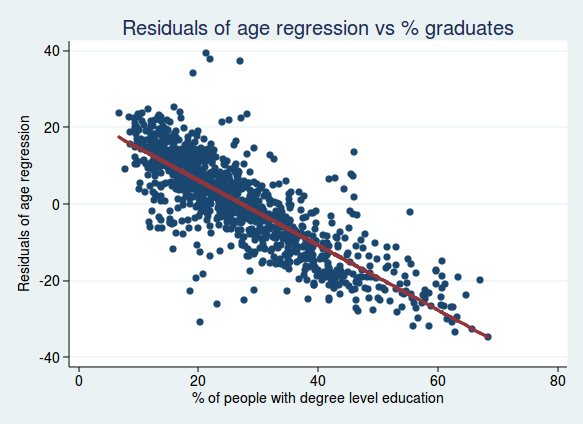 Also, hypnosis is contraindicated in autism, Asperger's syndrome, dementia and mental retardation.
Also, hypnosis is contraindicated in autism, Asperger's syndrome, dementia and mental retardation.
See also
Myths about psychotherapy
A qualified hypnotherapist must hold a clinical diploma. In America, Europe and other countries, in order to practice hypnosis, it is enough to be a nurse, nurse or physiotherapist with a second degree. In addition, such a specialist must have a second diploma confirming the completion of special hypnosis courses. In most countries, the use of hypnosis in treatment does not even require the practitioner to be a member of an association of hypnotherapists. It is also desirable that the hypnotherapist specializes in the area of problems with which the patient comes to him. For example, a person suffering from post-traumatic stress disorder may benefit from seeing a hypnotherapist who specializes in PTSD.
Regressive hypnosis session
During a session of regressive hypnosis, a person is introduced into a state of relaxation, and then immersed in a trance. When the patient reaches a certain depth of trance, the hypnotherapist begins to lead him back along the time vector until he reaches the period when the traumatic situation occurred. The specialist guides him along temporary reference points, and the person himself chooses the point in time at which the traumatic events occurred. After that, without removing the patient from the state of hypnosis, a traumatic situation is worked out with him using various therapeutic techniques. Further, the patient may experience catharsis and the release of fixed, locked feelings and emotions. Then the hypnotherapist takes the patient back along the time vector to the present moment of his life. After the patient comes out of trance, his memories and traumatic situation are worked out with the therapist outside of hypnosis.
When the patient reaches a certain depth of trance, the hypnotherapist begins to lead him back along the time vector until he reaches the period when the traumatic situation occurred. The specialist guides him along temporary reference points, and the person himself chooses the point in time at which the traumatic events occurred. After that, without removing the patient from the state of hypnosis, a traumatic situation is worked out with him using various therapeutic techniques. Further, the patient may experience catharsis and the release of fixed, locked feelings and emotions. Then the hypnotherapist takes the patient back along the time vector to the present moment of his life. After the patient comes out of trance, his memories and traumatic situation are worked out with the therapist outside of hypnosis.
- Diseases and disorders
Share:
Self-hypnosis
SOME APPLICATIONS OF SELF-HYPNOSIS
Self-hypnosis is a unique remedy in many respects.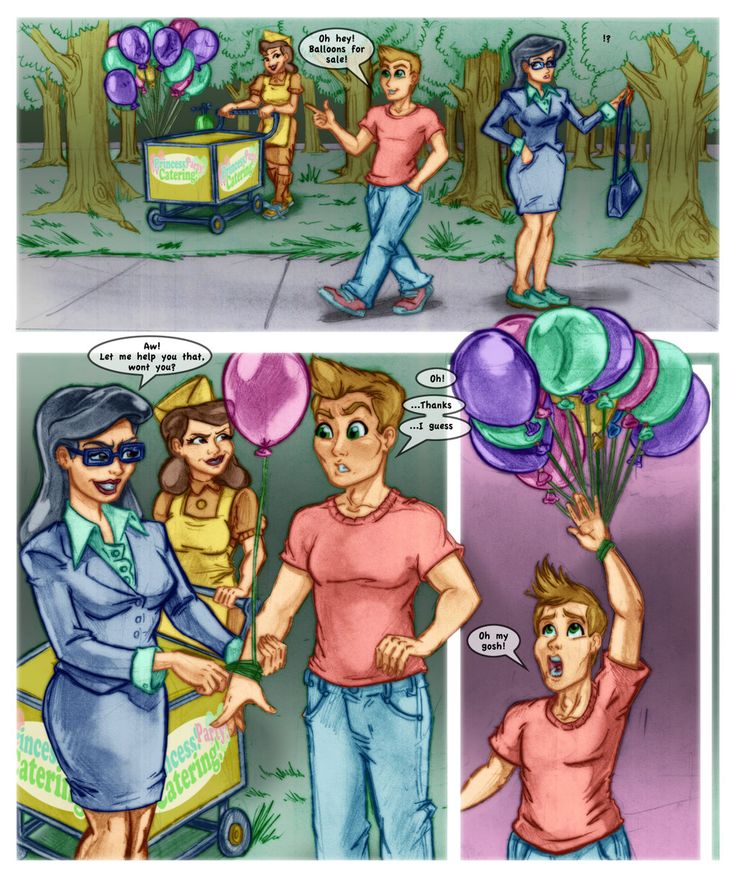 Against insomnia, for example, it works almost flawlessly. Imagine: you lie down in bed, close your eyes, fall into a trance, and then naturally move from hypnotic sleep to ordinary sleep. At the same time, the self-hypnosis block should be something like this: "I relax with every breath I take, I feel more and more sleepy. A few minutes will pass, and a healthy, sound sleep will come to me. I will sleep soundly without waking up all this night."
Against insomnia, for example, it works almost flawlessly. Imagine: you lie down in bed, close your eyes, fall into a trance, and then naturally move from hypnotic sleep to ordinary sleep. At the same time, the self-hypnosis block should be something like this: "I relax with every breath I take, I feel more and more sleepy. A few minutes will pass, and a healthy, sound sleep will come to me. I will sleep soundly without waking up all this night."
Then abruptly divert your thoughts to something very pleasant; this is important, because it has been noticed that the harder you try to fall asleep, the worse you succeed. A calm, pleasant sleep after this is guaranteed to you, you can rest assured. If not, then your insomnia is a neurotic symptom, and the search for its roots will have to be taken seriously.
Having mastered self-hypnosis, you will learn to relieve tension and fatigue, you will feel calmer and more relaxed; your daily life will become much more pleasant in many ways.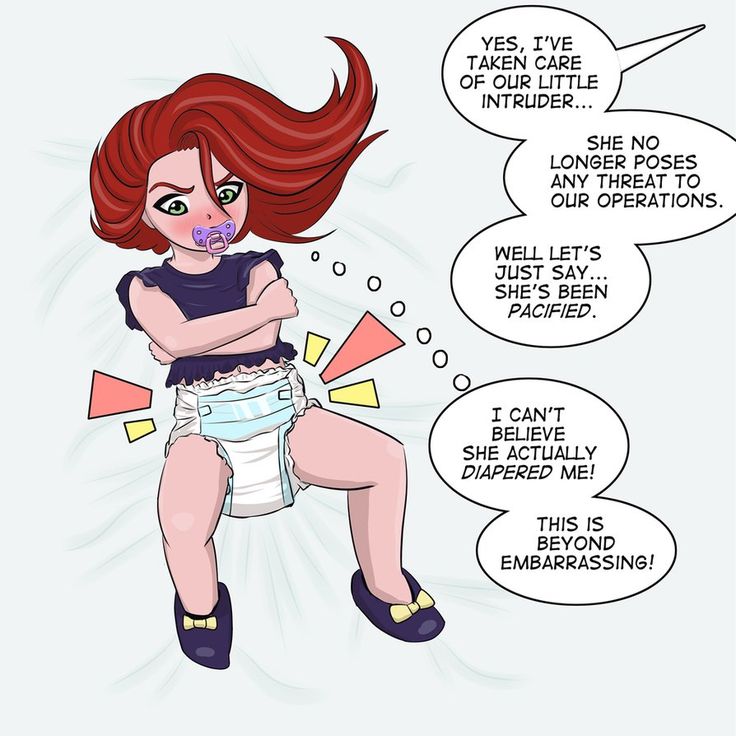 Imagine that you come home from work in the evening, fall down from exhaustion, and then you still need to gather for a visit; a couple of suggestions in self-hypnosis - and you get up cheerful, joyful, overflowing with new energy.
Imagine that you come home from work in the evening, fall down from exhaustion, and then you still need to gather for a visit; a couple of suggestions in self-hypnosis - and you get up cheerful, joyful, overflowing with new energy.
It is hardly worth describing all the charms of hypnotic anesthesia: you yourself can experience them, say, in a dentist's office. It should not be forgotten, however, that pain most often performs a signaling function, warning the body of imminent danger, so it would be highly imprudent of you to engage in, say, anesthesia of the appendix. At the same time, anesthesia in self-hypnosis eased the last hours of many of those who were doomed to die of cancer. In other words, this truly magical tool should be used wisely, remembering that pain relief is good when and only when it is really needed.
Self-hypnosis will help you in your studies. It is enough just to learn how to open your eyes in a trance (and this is not so difficult), and you can increase the efficiency of all mental processes many times over. With the help of hypnosis, you will improve your memory and sharpen your perception, learn to concentrate on a subject to the utmost, and become brilliant at exams.
With the help of hypnosis, you will improve your memory and sharpen your perception, learn to concentrate on a subject to the utmost, and become brilliant at exams.
Before opening your eyes for the first time under hypnosis, suggest to yourself in advance that each time you open your eyelids, you will only go deeper into a trance. This precaution does not hurt, since this movement in itself, which we associate with awakening from sleep, usually reduces the depth of immersion.
The easiest way to learn the art of self-hypnosis is as follows: go to a psychiatrist who knows the technique of hypnotherapy and ask him, having hypnotized you, to enter a signal formula into your subconscious mind, with the help of which you could later do the same procedure yourself, increasing the depth of immersion over and over again . Just try to always stay away from "variety" hypnotists. Then, after a few independent exercises, you will begin to dive to fairly large depths.
If you don't have such a specialist nearby or if you don't have the opportunity to contact him, don't be discouraged: the proposed method will allow you to easily master the technique of self-immersion on your own.
SELF-DIVE TECHNIQUE
First, find an object on which it would be nice to stop the eye: let it be a picture on the wall or some point on the ceiling - whatever, as long as it does not annoy you. A pronounced hypnotic effect has a candle flame; the fire in the fireplace, the lucite pendulum ball attract the eye well (over time, of course, you can easily do without all this). If you have a record player handy, put on some quiet, soothing music.
Make yourself comfortable, whether sitting or lying down. Without taking your eyes off the flame of a candle (or another “hypnotizing” object of your choice), take three or four very deep breaths and exhalations - this will sharply relieve muscle tension - and start asking yourself suggestions (mentally, of course, it is not necessary to say anything out loud).
The first of them can be formulated something like this: "The longer I look at the flame of a candle, the heavier my eyelids become. Very soon my eyes will close and I will enter a hypnotic trance. " Repeat this phrase (made up, perhaps differently) several times. As soon as you feel that the eyelids are really heavy, just let them fall freely; it is not necessary to look at the flame for a long time - one or two minutes is enough.
" Repeat this phrase (made up, perhaps differently) several times. As soon as you feel that the eyelids are really heavy, just let them fall freely; it is not necessary to look at the flame for a long time - one or two minutes is enough.
By the time the eyelids close, you should have a keyword (maybe a phrase) ready to dive. The team works well: "Now - relax!" The first part of it, mind you, is very significant: the subconscious must know that the immersion will begin precisely "now", and not sometime in the future. Say your signal phrase three times and very slowly.
Now it's time to relax. Start with your right foot: bend your toes back towards you, wiggle them, try to tighten each muscle, then abruptly release tension - from the tips of the fingers to the very thigh. In the same way, successively relax the left leg, the muscles of the abdomen and chest.
By this time your breath should "go down" to your diaphragm; less likely to be a pulse. At the first moment of immersion, however, the heartbeat may become more frequent, but this will not last very long.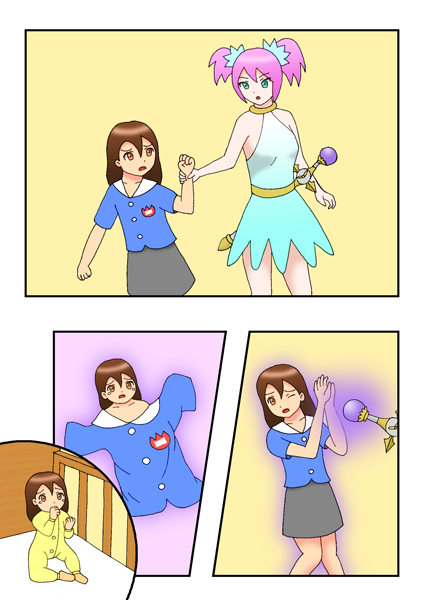
Relax the muscles of the back, shoulders and neck (this is where tension often accumulates), then alternately, from the fingertips to the shoulders, relax both arms. As you dive, your facial muscles will straighten out by themselves: the facial features seem to stiffen - which, by the way, is one of the external hypnotic characteristics.
You are now ready to continue your descent. Say to yourself mentally: "I continue to sink - deeper and deeper, deeper and deeper," - then imagine that you are standing at the very top of the escalator: here are its handrails, here is a long row of steps smoothly floating somewhere deep ... in a word, to "draw" with thought as real and clear a picture as possible. Get ready to begin the countdown from ten to zero: on the count of ten, step forward and, as the moving belt carries you down, slowly, monotonously continue to say to yourself: "three ... two-one ..." Finally, on the count of "zero", get off the escalator to an imaginary platform. To begin with, you can lengthen the descent, "passing" from one moving span to another; over time, the need for this will disappear by itself.
To begin with, you can lengthen the descent, "passing" from one moving span to another; over time, the need for this will disappear by itself.
If you are afraid of escalators for some reason, slowly go down the most ordinary stairs or imagine that you are going up in an elevator. One of the patients once confessed to me that he was afraid to go down somewhere; couldn't he, he asked, move up instead? Why not? Of course, "dive" is usually associated with descending, but, in principle, the direction does not play any role here, so if you want to "ascend" into a trance, replace "deep", "deeper", in your suggestions with " far", "far" - that's all.
So, now you are undoubtedly in a light hypnotic trance (someone may have managed to move into the middle "layers" during this time). Repeat the "immersive" suggestion a few more times, and then take your mind off everything, relax mentally, imagine yourself relaxing in the background of some idyllic landscapes. It is noticed that such switching helps to significantly increase the speed of descent.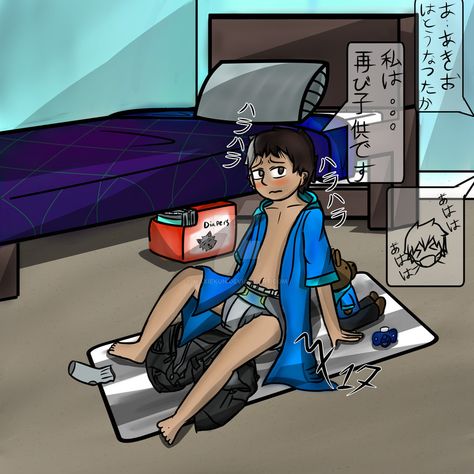
Beginners love to analyze their condition from the very first minutes, to guess the depth - there is no need to do this. For you now, the most important thing is a positive attitude: you just have to believe that success will come, even if maybe not immediately. The main thing is not to force the descent and in general apply as little effort as possible to everything: passivity and indifference will bring you closer to the goal, excessive diligence, on the contrary, will move you away from it.
So, we will assume that you are in the initial stage of immersion. Most likely, the way it really is.
DEPTH MEASUREMENT
Staying in a hypnotic trance at a constant level is almost impossible. There is always a kind of "rocking" here: we either smoothly fall into the "pit", then slowly emerge on the crest of the "wave". Such phenomena indicate that you are already at a sufficient depth.
And yet, how do we know at what particular stage of immersion - light, medium or deep ("somnambulistic") - we are? For the first five or six training sessions, try not to think about it at all. Very soon you will be able to learn about your "location" directly from the subconscious: experiments show that it is capable of calculating hypnotic "coordinates" with a high degree of accuracy.
Very soon you will be able to learn about your "location" directly from the subconscious: experiments show that it is capable of calculating hypnotic "coordinates" with a high degree of accuracy.
Let's imagine that our "scale" of hypnotic absorption is the most ordinary measuring ruler 36 inches long. We will agree to consider the first 12 divisions as corresponding to the entire area of light hypnotic trance. Then the second foot section will indicate the average, and the third (25 -26 inches) - the deep levels of the dive. Our possibilities, generally speaking, are not limited to the last division of the scale: under it there is also an area of the so-called plenary (that is, "full") trance, but the descent here, even under the guidance of an experienced operator, is carried out in several stages, and independently to such depths, according to apparently impossible to reach at all. This should not upset us in any way: the "plenary" trance does not open up any new possibilities for hypnotherapy and arouses interest solely from the point of view of pure science.
Under hypnosis, the subconscious can respond with fingers; upon awakening, the pendulum is equally applicable. Formulate your question something like this: "How deep have I reached now? Have I been below the 20 mark on my scale?" If you get a negative answer, raise it up: "Am I over 15 inches now?" Otherwise, look a little deeper: for example, to the 25-inch dash. So, dropping the imaginary "inches" out of the bracket, you will determine the maximum depth of your dive. With a strong desire, the answer can be reduced to a very accurate figure, but for practical purposes it is enough to know the five-inch interval.
HOW TO WAKE UP WELL RESTED
In order to get out of a hypnotic sleep, it is enough just to mentally say to yourself: "Now I will wake up" - and count up to three, you can - up to five. You will almost certainly feel shaken up, refreshed, feel a surge of new strength, but it is better to make sure in advance and provide all this with a special suggestion. Sometimes at the moment of awakening, a slight headache suddenly appears - by suggestion you can easily protect yourself from this danger.
Sometimes at the moment of awakening, a slight headache suddenly appears - by suggestion you can easily protect yourself from this danger.
Time passes imperceptibly under hypnosis, and half an hour will fly by for you like a few moments. Going into a trance very tired, you run the risk of "slipping" into the most ordinary sleep: it is better to warn this possibility in advance. The duration of the hypnosis session is easily adjustable: if you “order” yourself the time of awakening by suggestion, the subconscious mind will wake you up exactly on time.
The state of deep hypnotic sleep is characterized by lethargy, both physical and mental: one does not want to think about anything, and it is very difficult to concentrate on autosuggestions. Therefore, the ideal "place" to work on yourself is considered to be the average level of immersion, and to be very precise, the segment between 20 and 25 inches on your scale.
When asking self-hypnosis, it is very good to repeat it to yourself several times and "dive" deeper: such a maneuver allows the "inner mind" to better understand and assimilate your thought.
SELF-DIVE AND SOME TESTS
At first, the self-immersion process will take you 20 to 30 minutes. It is better not to take measurements here, since even the slightest disappointment can make further work very difficult. The maximum depth of immersion is reached, apparently, somewhere by the 8th - 10th session, although exceptions to the rules are not uncommon. After about the fifth "descent", you can already offer yourself some kind of hypnotic test: successful completion of it in itself will facilitate your mastering of new "spaces", will open access to the most interesting phenomena.
The first test is called the "pop-up hand". So you are in a trance; your arms are relaxedly extended along the body or rest on the armrests. Concentrate on your right hand (left if you are left-handed), feel its heaviness and complete immobility well. And then inspire yourself that the weight of the arm will now begin to drop sharply and the heaviness, like air, will disappear from it.
“The arm is getting lighter and lighter,” you repeat to yourself, “lighter and lighter. Now it will become light as a feather, so light that it will rise into the air by itself. It will bend at the elbow, the fingers will come off the surface and float to the surface. up, and behind them the whole hand will slowly move: higher and higher, higher and higher ... It will not be long before the fingers touch my face.
And indeed, you will immediately feel how the hand begins to quickly lose weight. The fingertips will tremble, rise into the air and slowly float up, dragging the whole hand with it. Keep repeating the suggestions, but don't consciously "help" the movement (of course, you shouldn't make it difficult either). Controlled solely by the will of the "inner mind", your hand will very easily pop up on its own. After a few minutes (and most likely much faster), you will touch your face with your fingers.
The ascent will begin slowly, and the movement will initially consist of small shocks; then, with increasing height, the speed and smoothness will gradually increase. Feeling the touch on your face, just let the brush fall - freely and comfortably. A successful test indicates that you are at least in the mild stage of hypnosis. If you fail, do not despair, try again in the next session.
Feeling the touch on your face, just let the brush fall - freely and comfortably. A successful test indicates that you are at least in the mild stage of hypnosis. If you fail, do not despair, try again in the next session.
"CLOSED EYELIDS" AND "CLOSED FINGERS"
Your eyes are closed, eyelids tightly closed. Tell yourself: “Now I will count to three and after that I won’t be able to open my eyes. The more I try to open my eyelids, the stronger they will stick together. you can’t unstick it; three - the eyelids closed completely, and the eyes are now closed tightly, as if on a castle.
Try to open them, but keep repeating in your mind: "Locked, locked!" If some conscious effort does not cause you to break the suggestion, then the test is successful. The mechanism of such phenomena is quite simple: the "inner mind" blocks some communication channels, and the impulses sent by consciousness simply do not reach the goal. Do not forget only that suggestions should be spoken slowly, and the pauses between them should be sufficient so that the subconscious mind can receive the signal and execute the command embedded in it.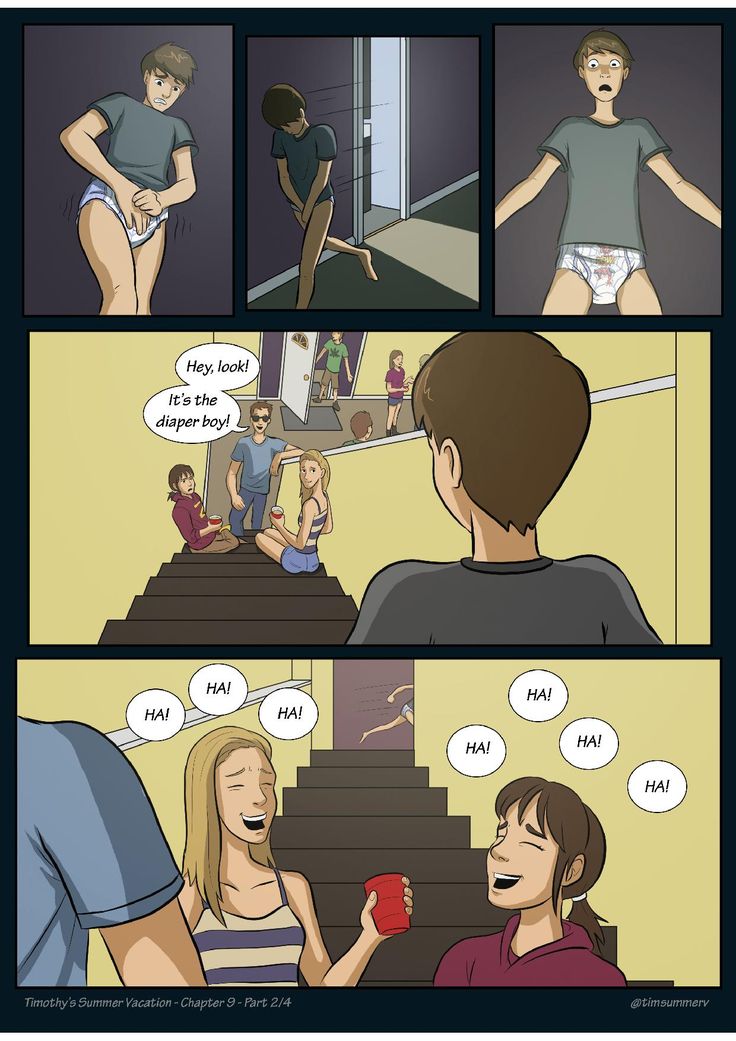
The second test, "interlocked fingers", is essentially the same as the first. With your fingers crossed, you either extend your hands in front of you, or throw them over your head, and then you ask yourself the same suggestions, slightly modified.
SUGGESTIONS FOR HYPNOTIC SELF-DIVE
If the above method does not work for some reason, try using a special "self-immersion test". After repeating your key phrase three times, "go out" then to the top of an imaginary escalator and say mentally something like this:
"I am lying comfortably and very calmly. My body is resting, becoming more and more relaxed with each new breath. My eyes are closed. I feel a joyful, happy calm spreading over my whole body, and I completely surrender to this feeling. What a it's a pleasure to finally relax.My arms and legs are filled with a pleasant heaviness.I relax more and more, sink deeper and deeper into a hypnotic trance.All worries, worries recede somewhere into the background; there are no more problems for me.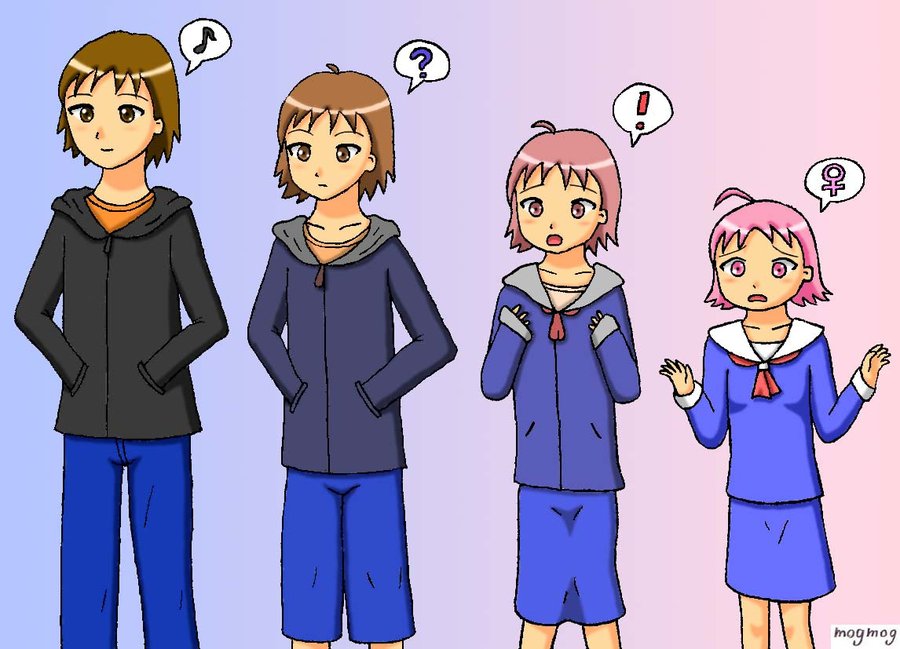 I'm leaving down, deeper and deeper, with each new breath - deeper and deeper. In front of me is an escalator: now I will take the first step, start the countdown and swim down the stairs into a hypnotic trance. So I step on it and begin to sink - deeper and deeper ..." - with these words, you mentally step forward, start slowly counting from ten to zero and successfully descend. It does not matter whether you memorize this text verbatim or retell it in your own words: the main thing here is to convey the main idea to the subconscious.
I'm leaving down, deeper and deeper, with each new breath - deeper and deeper. In front of me is an escalator: now I will take the first step, start the countdown and swim down the stairs into a hypnotic trance. So I step on it and begin to sink - deeper and deeper ..." - with these words, you mentally step forward, start slowly counting from ten to zero and successfully descend. It does not matter whether you memorize this text verbatim or retell it in your own words: the main thing here is to convey the main idea to the subconscious.
After a few sessions, when the main training period is over, you will begin to notice that each successfully completed test, in general, any phenomenon caused by suggestion, in itself contributes to an increase in the depth of immersion.
PARTIAL AGE REGRESSION AND ITS APPLICATIONS
It is possible that you will want to use age regression in the course of your self-improvement program. First, you should know that you should not strive for the maximum depth of immersion: full age regression in a deep trance will most likely take place unconsciously, which means it will not bring much benefit. Partial age regression, used in self-therapy, is also achievable in the stage of light hypnosis. For your first excursion into the past, try to choose some very recent, not too prominent event. Just keep in mind: you have not so much to remember it as to live it again with all five senses.
Partial age regression, used in self-therapy, is also achievable in the stage of light hypnosis. For your first excursion into the past, try to choose some very recent, not too prominent event. Just keep in mind: you have not so much to remember it as to live it again with all five senses.
So, having outlined the goal of the first "journey" - let it be, say, a morning conversation with your wife at breakfast - go into a trance and mentally say to yourself: "Now I will be transported into the recent past and relive everything that happened this morning in kitchen at our table. So, I go back in time - to the moment when my wife and I sat down to breakfast." Repeat the suggestion several times. Then start recreating the big picture in your mind. At first it will be somewhat vague, but soon the details will gradually begin to clear up. Try to get a better look at the table and everything that is on it. Then look at your wife with your "inner eye", pay special attention to how she is dressed, take a good look at the pattern of the fabric of the dress and the colors. By this time, the memory itself will begin to revive more and more details of what is happening. Recreate in yourself the feeling of the surrounding space; get a good feel for the surface of the chair underneath you.
By this time, the memory itself will begin to revive more and more details of what is happening. Recreate in yourself the feeling of the surrounding space; get a good feel for the surface of the chair underneath you.
Now "roll" the movie to the point where you have taken your first sip, "taste" the drink as best you can.
Put the cup back in place and put all your attention on the food. Pay attention to the table setting, restore the color and shape of each of its details before your eyes. It seems that your wife spoke to you: try to hear her every word, accurately recreate her voice in memory. For self-therapy, it is especially important to develop hearing in regression.
Gradually, fragments of memories will begin to come to life and form into a solid canvas of real action. With a little practice with yourself in the same vein, you will learn to easily recall details that you would never be able to remember in the usual way. If the first attempt at regression fails, write down the suggestions on paper and have someone read them aloud while you are in trance.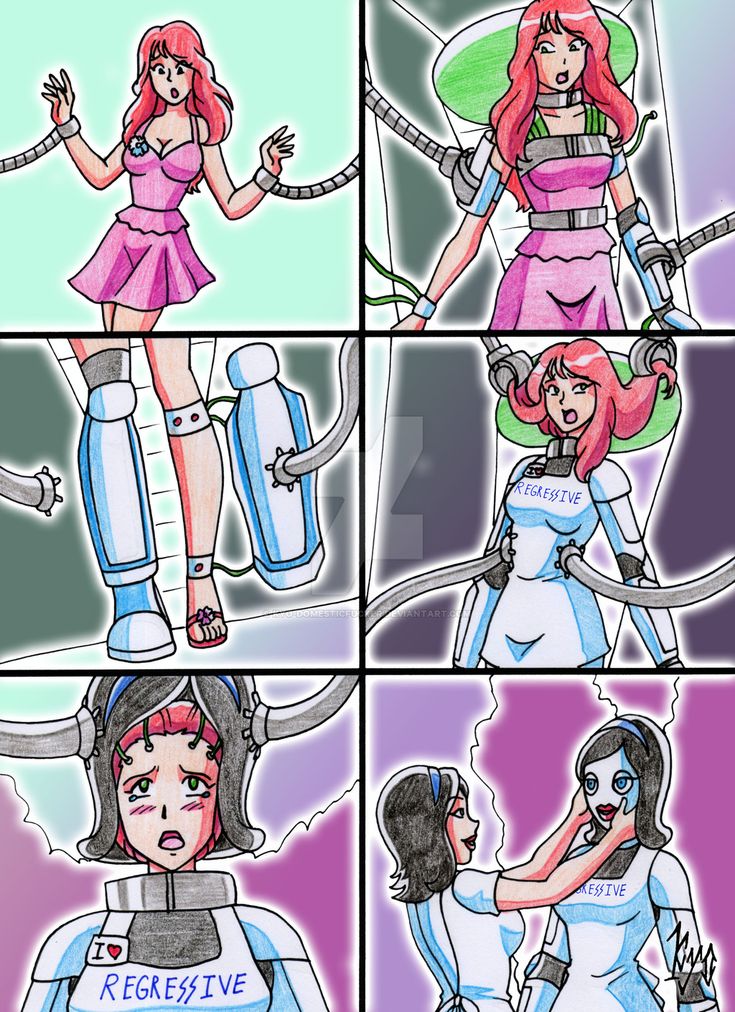
If successful, the next session of self-hypnosis can be dedicated to "reviving" some very old, perhaps completely forgotten episode. Tell yourself that you want to go back to your distant childhood and relive any slightly painful, but completely harmless incident - a fall, a bruise, a slight cut. Probably, at that moment you burst into tears, and someone rushed to comfort you? What does a mother usually say to her baby in such cases? "Don't cry, baby, well, that's all, it doesn't hurt anymore..." Try to mentally choose the words that you would console yourself with. Something completely different comes to mind? Great, it means that the subconscious mind is already beginning to reproduce the true sound range in itself ... Well, someone’s speech is already sounding in your ears! Now it is enough just to realize the meaning of the spoken words, and the regression will go in full swing.
Now mentally look around and try to make a general assessment of your surroundings. Where are you - in the house or in the open air? Keep peering into the long forgotten world, by force! eyes clearing up the picture. Warn yourself that you are approaching the moment of the incident, and keep an even closer eye on what is happening. Finally, by suggestion, "trigger" the event and continue your observation. Another moment, and here you feel! pain, understand its cause. Probably, the new sensation is slightly blunted, but nothing: your task is complete - now in the present. Don't forget to do? it is at the end of each such "journey".
Warn yourself that you are approaching the moment of the incident, and keep an even closer eye on what is happening. Finally, by suggestion, "trigger" the event and continue your observation. Another moment, and here you feel! pain, understand its cause. Probably, the new sensation is slightly blunted, but nothing: your task is complete - now in the present. Don't forget to do? it is at the end of each such "journey".
The usual age regression is done without much difficulty. True, the possibility of internal resistance is not ruled out - who knows, suddenly the subconscious does not want to experience again, even if it is a very slight pain. In this case, you can go to about the same age, but to an exceptionally joyful and pleasant event. "I'm - well, let's say, five years old," you say to yourself, "and something very, very good happened today. Maybe we celebrated Christmas, or I received a wonderful gift on my birthday. Now I will choose any pleasant episode of those years and with all five senses I will relive it. " Almost immediately, a long-forgotten scene will “flash” in your mind, you will resurrect all your impressions, and then return to today.
" Almost immediately, a long-forgotten scene will “flash” in your mind, you will resurrect all your impressions, and then return to today.
If Nee's first attempt is successful, repeat it next time, but at a slightly greater depth. It is desirable to achieve your own: returning to the key episodes of past years will subsequently become an important part of your self-healing program.
In the mode of age regression that we have just considered, you were a direct participant in the event. Meanwhile, it has long been noted that any trouble is experienced much easier if you perceive it as if from the outside, as something happening to an outsider. Feeling that you cannot start regression because you have come across some kind of internal barrier, agree in advance with the subconscious that in the next "view" you will no longer be a participant in the event, but just an outside observer - this will surely help bypass the obstacle.
HYPNOTIC Immersion Test
Record it on tape, you can do it yourself - slowly and carefully pronouncing each word - or ask someone you know. This information "injection" will first put you into a trance and then give your subconscious a self-immersion formula, the effectiveness of which you can easily check immediately after waking up.
This information "injection" will first put you into a trance and then give your subconscious a self-immersion formula, the effectiveness of which you can easily check immediately after waking up.
Lie on your back or make yourself comfortable in an easy chair. Extend your arms freely along the body or lower them on the armrests. Close your eyes, take two or three deep breaths and start recording:
"You lie relaxed and calm, absorbing my every word. Now you will listen very carefully to everything I tell you, following all my instructions at the same time. First I will help you to sink into a hypnotic trance, then I will teach you how to do it yourself. Your eyes are closed Take a deep breath - hold your breath - exhale
The more completely relaxed you are now, the deeper you will go into a hypnotic trance Now every muscle in your body will be filled with a feeling of peace and pleasant sluggishness Let's start the relaxation with the right leg: tense it all sharply force - then release the tension.
The muscles of the leg relax - from the tips of the fingers to the very thigh. Tighten the muscles of the left leg; relax them - from the tips of the fingers to the thigh.
Straighten the abdominal and chest muscles; let your neck and respiratory muscles relax. The back and shoulders, the bottom of the neck, where tension accumulates most often, are completely relaxed.
The hands are relaxed - from the shoulders to the very tips of the fingers - the muscles of the face are resting. Your whole body enjoys total peace. Tension subsides, fatigue disappears, you are filled with a sweet feeling of peace and indifference. You feel lethargic and completely apathetic.
As the muscles relax one by one, you will go deeper into a hypnotic trance. Listen to your feelings, delve into them: now you will feel how your arms and legs are filled with heaviness. Or maybe, on the contrary, it will seem to you that the body becomes weightless and soars on a soft, airy cloud.
Now imagine that you are standing at the top of an escalator - here are its handrails, but the steps, one after another, slowly float down .
.. Now I will start counting from ten to zero, and on the count of ten, mentally step on escalator, grab the handrails and slowly go down the step tape. If you want, you can imagine yourself on the most ordinary stairs, or instead of going down, you can go up - say, on an elevator. If at the moment it is difficult for you for some reason to imagine something before your eyes, it’s not scary: just listen to my voice. The countdown itself will start to slowly take you down - deeper and deeper.
Count slowly - ten - you get off the escalator and start down; nine, eight, seven, six - you go deeper and deeper; five, four, three - deeper and deeper; two, one, zero - you go to the site, but do not stop diving. Now each new breath will increase your depth. So, you are absolutely relaxed - lie down and enjoy complete peace. Spread all the muscles a little more, a little more - like this. Your breathing has become less frequent, and its center has shifted down to the diaphragm.
Now - attention: in a few seconds you will feel that your right hand (or left - if you are left-handed) will begin to lose weight, becoming lighter and lighter every second.
Very soon, she will simply float up into the air. Probably, the tips of the fingers will first come off the surface, or maybe the hand and arm will rise as a whole. They will float up into the air and begin to approach the face, as if it were attracting them with a magnet, until the first contact - I wonder at what point it will happen? .. The elbow is already bent, fingers come off the surface, the whole arm comes into motion. If there is a delay, slightly push off with the pads of your fingers: the main thing is to give the first push, and then the hand will already rise by itself until it touches the face.
The higher the hand floats, the deeper you sink into a hypnotic trance; the deeper you go into hypnotic trance, the higher the brush will float. The hand rises - higher and higher. When you feel the touch, just let her fall into any comfortable position. If the hand is still in motion, let the stop and return happen automatically afterwards. Forget about it for now: I will tell you how, from now on, you can go into a hypnotic trance at will, whenever you want.
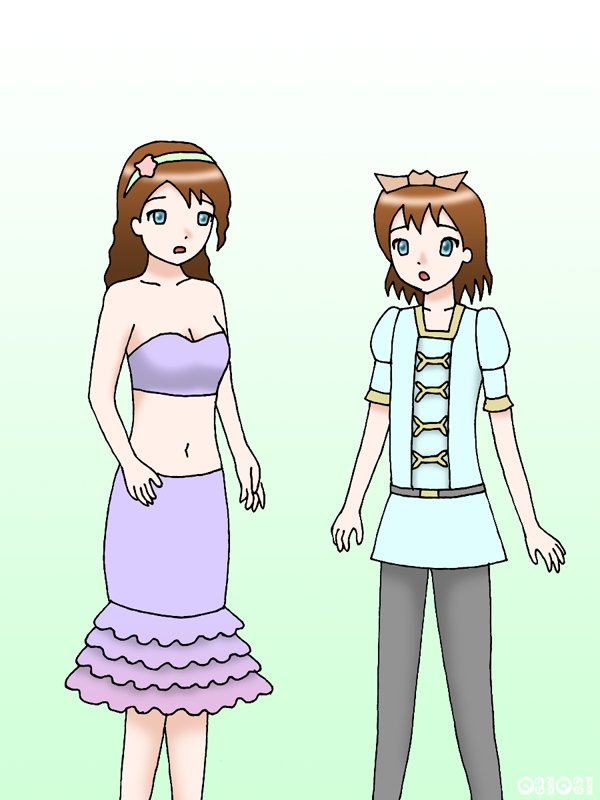
The method will be the same that we just used with you. Once you are comfortable, you will close your eyes and begin a gradual immersion. For starters, you can light a candle and look at the flame for two or three minutes.
Then you close your eyelids and mentally say to yourself: "Now I will go into a hypnotic trance" - after which say the signal phrase ("Relax!") three times and very slowly. There is no need to say anything out loud: a mental suggestion is enough for the process of immersion to begin. By taking a deep breath, you will conduct a complete and consistent relaxation of the muscles of the whole body - just as we did just now. Then imagine an escalator in front of you, and as you step down onto the moving step, begin to slowly count to yourself from ten to zero. First, you can go from one escalator to another three times; afterwards one span will be quite enough.
In order to come out of the trance at any time, all you need to do is mentally say: "Now - I'm waking up" - and slowly count to three.

Learn more





